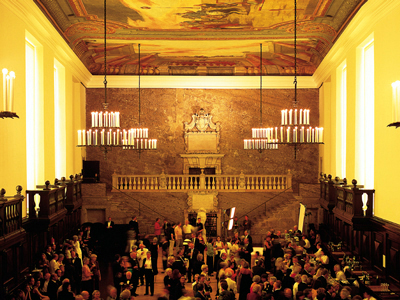
By ANDREW POWELL
Published: August 27, 2015
SALZBURG — Two beggars sat on either side of the entrance to the Haus für Mozart Aug. 6 as attendees arrived for Norma. As if this was not alarming enough — and it disturbed one’s thoughts more than the tense Résistance staging of Bellini’s opera inside — another two panhandlers were positioned with military discipline at the Kollegienkirche’s door the next evening for the Klangforum Wien concert. And on Aug. 8, before Il trovatore, three beggars zigzagged back and forth between guarded entrances of the Großes Festspielhaus seemingly worried that they could not proceed with their assigned jobs — for these were E.U. citizens dispatched by predatory gangs from Romania, Bulgaria and Hungary, if media reports* are to be believed. Nowhere did the police intercept.
Gyrating in his nearby grave was Herbert von Karajan, the Salzburg maestro who ran the Salzburg Festival adroitly from 1956 to 1989. He liked his gypsies on stage, not on the steps. He continues to fret about his city as local people exile themselves to the suburbs, locally owned businesses die out, historic dwellings are gutted. Having launched two of the four classical-music fairs here, the Salzburg Easter Festival (in 1967) and the Whitsun Concerts (1973), he senses a certain festival fatigue now, with music visitors present eleven weeks of the year. And from Anif cemetery he projects his horror at the main festival’s fuzzy sense of mission and the preservatives lacing its corporate food.
Bärenreiter’s critical edition of Norma relates the tragedia lirica snugly with the rest of Bellini’s output, notably I Capuleti e i Montecchi. On the evidence of this performance — a revival of Patrice Caurier and Moshe Leiser’s May 2013 staging conducted by Giovanni Antonini — it is a swifter, more emotionally direct opera than known in the 20th century, with barer dynamic contrasts, airier textures, incisive choruses and instrumental vibrancy. Its melodies sound more articulate now that they are less dilated, its ornaments more germane. It wants a bright voice for Adalgisa, rationally, and an agile Pollione. The title role is exacting but no sui generis few can sing. Credit the curators. Maurizio Biondi initiated work from the autograph score for Parma performances in 2001 conducted by his brother Fabio; Riccardo Minasi, himself a conductor, furthered the effort for 2010 concerts in Dortmund led by Thomas Hengelbrock.
Already fluent in this version, Antonini brought tautness to Bellini’s lines no matter the tempo or expressive purpose. Lyrical charm flexibly balanced urgency. His cast — the same principals as for Hengelbrock, who left the Norma project before Decca began its related studio recording in 2011 — apparently shared his enthusiasm. Cecilia Bartoli stalked the boards as a priestess and mother possessed (in a production that trades devotion and sacrifice for World War II realism and madness), her long lines and embellishments articulated and colored to keen dramatic effect. Rebeca Olvera portrayed the torn Adalgisa with tender tones and skilled musicianship, partnering Bartoli precisely. John Osborn managed the awkward musical and theatrical chores of Pollione with fluency, almost garnering sympathy, while Michele Pertusi made a dull, unexpectedly suave Oroveso. The Coro della Radio-Televisione Svizzera (from Lugano) and period-instrument Orchestra La Scintilla (based in Zurich) supplied due degrees of vigor, fury and reflection.
Rewards at the Kollegienkirche (Aug. 7) lessened as the music got newer. Sylvain Cambreling on the podium coaxed precise yet nuanced sonorities in Boulez’s orderly cantata Le marteau sans maître (1955), smoothing the handovers of the vocal and instrumental strands and validating the “fertilizer” role of Char’s bitty poems. Hilary Summers’ confident contralto injected spontaneity. Still a functioning church, the lofty space tended to open up Klangforum Wien’s neatly delivered textures, a flattering effect that also helped Olga Neuwirth’s Lonicera caprifolium (Goat-Leaf Honeysuckle) after the break. This haunting 1993 piece for ensemble and audiotape deploys its forces sparingly to spin a distanced, hollowed plaint.
Then came the same composer’s Eleanor in its world premiere. A reduction in suite form of her disliked American Lulu venture of 2011, it promised to distill that work’s strongest ideas via blues singer (Della Miles), drummer (Tyshawn Sorey), ensemble and taped samples. What emerged was a formally hideous anthem to the bravery in political protest, a coarse Neo-Expressionist collage of fragmentary musical and non-musical material awkwardly scored. Sticking out like dusty saucers glued to a Schnabel canvas were Martin Luther King snippets, stale and mournfully unimposing. (Rebecca Schmid has fuller observations.)
Alvis Hermanis’ staging of Il trovatore, from 2014, places the action in the galleries of an art museum energized in reds and enlivened with sliding tableaux. It advances ably enough in Parts I and II of the opera but then, like Olivier Py’s production in Munich, runs out of ideas. There were reassignments this year. Gianandrea Noseda took over the conducting; Ekaterina Semenchuk and Artur Ruciński essayed Azucena and di Luna. Noseda insisted on an outsize orchestral sound, from an eager Vienna Philharmonic, but paid little attention to shaping and informing Verdi’s phrases, at cost to the whole work. Semenchuk sang in lucid Italian with power, expressive control, and theatrical zeal, and just about stole the show. Ruciński produced handsome legato lines, giving full value to notes. He also served as a smart foil to the Leonora, Anna Netrebko, who reprised her warm portrayal. Francesco Meli returned as the capable, not so memorable Manrico. Adrian Sâmpetrean made a clarion Ferrando. The night went sloppily, though, for the Vienna State Opera Chorus, muddying Cammarano’s words.
Perhaps it was the beggars, but this visit has underlined a number of maladies at today’s Salzburg Festival. Politicians run things now. They use proxy managers whose skills center on balancing the books and appeasing conglomerate sponsors — not exactly what Hofmannsthal, Reinhardt, Roller, Schalk and Strauss had in mind. There is no Intendant, or artistic director, this year or next. (The last one, Alexander Pereira, was ousted for having too robust a vision; Markus Hinterhäuser acquires the title in 2017, but he served in the artistically dithering regimes that preceded Pereira’s tenure.) Old formulas are being followed for programming, without a demonstrated understanding of why. The last innovation was the Ouverture spirituelle, back in 2012. Perforce we have seen a weakening in chamber music, a sharp cut in new opera stagings, a thinned, disjointed Ouverture spirituelle, and a miscellany of star-driven programs where there should be focus and mission.
If the institution looks half-detached from its artistic origins, it is fully so from local citizens, who operate, whether farming families or blue-collar workers, at some remove from the city center. Festival catering is emblematic. Conglomerates, not Salzburgers, decide the beverages, the appetizers, the employment contracts, the terms of service — all the while claiming sponsor privileges and bragging of “social responsibility.” A 1-fl-oz ristretto costs €3. Chewy-bread gravlax canapés under nitrate-laced dill sauce are €7.20 a pair. In nearby Munich, where labor costs are higher, vying local caterers offer pure-ingredient fare for reasonable prices, and less recognition.
Some issues run deeper. Locally owned storefronts that forty years ago proudly displayed festival posters, leaflets, mementos and trinkets are now scarcely to be found. A beloved antiquariat vanishes, an Intimissimi opens for business. No large inn remains that is both of the town and independent. Austrian law, protecting building façades not structures, has allowed corporate vandals to rip out the staircases, inner walls and woodwork of a historic block of houses below the Kapuzinerberg to make way for the conforming spaces and plastic fittings of a chain hotel. Festivalgoers’ alienation mounts on the streets, where hoards of tourists from nations that supply the West’s fuel and factory goods now roam in packs, with prams, sticks, mobile devices and religious garb, oblivious to the city’s Roman Catholic roots and its place in music, never mind the goings-on on Hofstallgasse. Only Prague has it worse as a real-life theme park.
Detached and alienated of course is how the beggars feel. So what would Karajan do? He would press the politicians to tighten the laws. He would identify and demand remedies for the harm to the festival within the powers of the city. He would partner with the few local food businesses persevering in the center — Schatz Konditorei, Café Tomaselli, Zum fidelen Affen, a couple of brasseries off the Kaigasse. When he ran the festival, he lured sponsors even as he navigated the artistic direction, and driving Volkswagen’s Scirocco never meant betraying Salzburg’s interests.
[*Nine O’Clock: “Highly irritated by a large number of Romanian beggars taking over … , local authorities have initiated a large-scale operation … . Salzburg media [quoted Mayor Harald Preuner] as saying ‘these people do look for sympathy, but helping them would mean supplying all sorts of mobsters, because the cash does not get to the beggar.’” The Local: “At present, police … have very little power to stop organized begging. … Begging was a central theme in Salzburg’s local election campaign.” “At peak times, around 150 beggars per day have been counted in the center of Salzburg.” UPDATE, The Telegraph (May 25, 2016): “Salzburg banned begging on most of its streets on Wednesday. The ban comes just days after a court overturned fines imposed on four people by the Salzburg police for ‘aggressive begging’ because they said ‘please’ to passersby.”]
Photo © Tourismus Salzburg
Related posts:
Salzburg Coda
Netrebko, Barcellona in Aida
Mozartwoche: January’s Peace
Horses for Mozartwoche
Bartoli’s Scot-Themed Whitsun
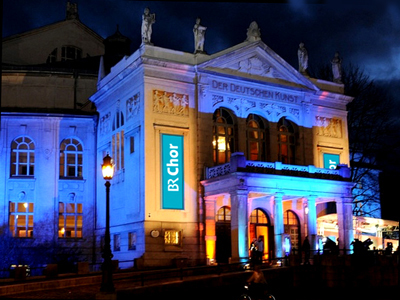
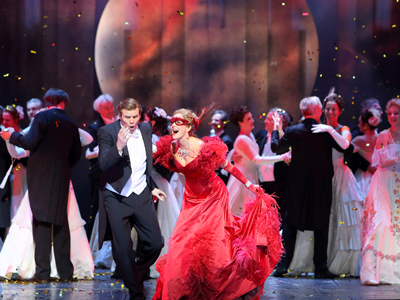
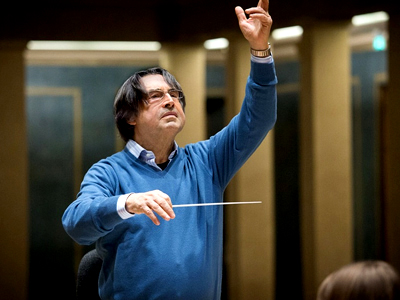
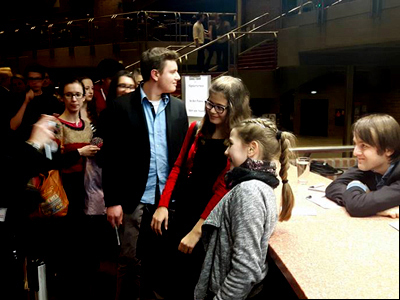
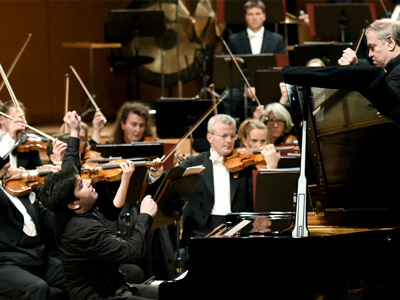
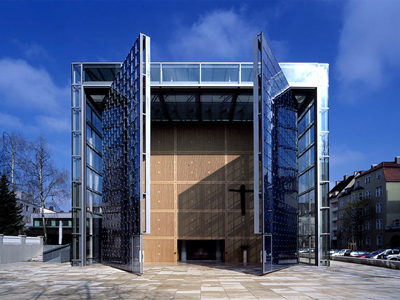
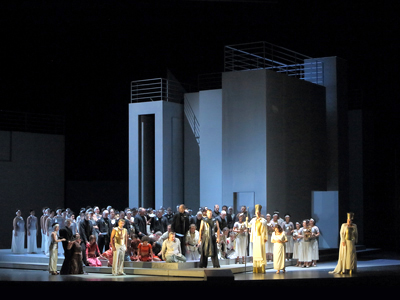
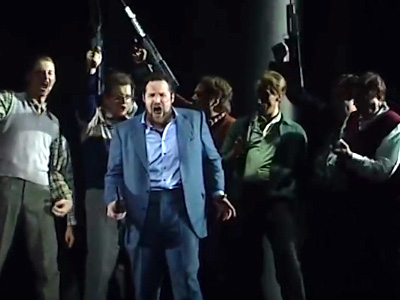

Mozartwoche: January’s Peace
Monday, February 15th, 2016By ANDREW POWELL
Published: February 15, 2016
SALZBURG — There is a pleasure in arriving in Salzburg with snow on the ground. Or maybe the word is reassurance: the city will be real, not a theme park; the people mostly locals, despite the hollowing out of property ownership here; the profile quiet, even intimate, affording a chance to connect with the past. Of Salzburg’s festivals, the snowiest inevitably is Mozartwoche, planned and manned by the Mozarteum to straddle the composer’s birthday, often by more than a week. Last year’s edition achieved a coup by returning horses to the Felsenreitschule, for Davidde penitente as realized by “French equine artist and theatrical genius” Bartabas; next year, managers Marc Minkowski and Matthias Schulz let Bartabas loose on Mozart’s Requiem (Mel Brooks having declined) and promise some thirty concerts besides, including three by the Vienna Philharmonic, with Haydn as “focus composer.”
Mozartwoche 2016, placing Mendelssohn in focus, opened Jan. 22 with spoken words lauding the long contribution of Nikolaus Harnoncourt not only to Mozart’s music but specifically to this festival, where he was again due to conduct before declaring several weeks ago his instant retirement. The packed day teamed Katia et Marielle Labèque with the Mozarteum-Orchester in the morning, continued at 3 p.m. with an András Schiff recital, and ended soberly with Mozart masses at the Großes Festspielhaus led by John Eliot Gardiner. Rewards were many, irritations few.
The matinee sorely needed a conductor to temper dynamics and coordinate the shaping of lines. Where was Ivor Bolton? It began with a Mendelssohn Trumpet Overture (MWV P2, 1826) that knew no piano. Next came Mozart’s E-flat-Major Concerto for Two Pianos (1781) and chronically clunky phrasing by the French sisters; this was redeemed somewhat by a neatly sprung Rondo. Quality rose with a still loud, yet spry, Schauspieldirektor Overture (1786), the music’s inventiveness laid out vividly. The teenage exuberance of Mendelssohn’s Concerto in E Major for Two Pianos (MWV O5, 1823), in conclusion, proved a good match for the Labèques; alas they then imposed a duo encore (and an insipid one, the last of Glass’s Four Movements for Two Pianos, 2008) to ruin our exit.
The Mozarteum’s Conrad-Graf-Flügel and Walter-Hammerflügel (1839 and 1782) stood side by side on the platform for Schiff’s recital. Mendelssohn came first: the Variations sérieuses (1841) and the F-sharp-Minor Sonate écossaise (1833), played on the later instrument with its charming pearly highs and fuzzy, attenuated lows. Schiff made inspired sense of the lines in both works and bound Mendelssohn’s ideas together expertly without shying from a breakneck pace where needed. The Walter’s clarity and evenness through the range made a stark contrast, its modest sound easy to settle into in this artist’s hands. Ideal tempos and immaculate voicing sustained Mozart’s late major-key sonatas, in C (für Anfänger), B-flat and D; the poise of Schiff’s playing overcame passing glitches.
Gardiner’s highly musical, not especially spiritual, reading of the Große Messe K427 (1783) closely resembled the adjusted Aloys Schmitt reconstruction he recorded in London decades ago. His crisp rhythms and airy textures, and the way these flattered the score’s abundant lyricism, seemed designed to please, as if Mozart had composed the truncated service just for today’s Monteverdi Choir and English Baroque Soloists. From this listener’s seat, vocal soloists Amanda Forsythe, Hannah Morrison (sopranos), Gareth Treseder (tenor) and Alex Ashworth (bass) could not be seen or properly heard, but the choir, also mostly out of view, sounded disciplined. Orchestrally it was a performance with resilience, wary balances, individual style; veteran sackbuttist Stephen Saunders managed to nod off during Forsythe’s Et incarnatus est, nearly losing his instrument off the riser’s edge. A horseless Mozart Requiem followed the break; for practical reasons we could not stay.
Photo © Tourismus Salzburg
Related posts:
Salzburg Coda
Horses for Mozartwoche
Mariotti North of the Alps
A Stirring Evening (and Music)
Maestro, 62, Outruns Players
Tags:András Schiff, Bartabas, Commentary, English Baroque Soloists, Felsenreitschule, Großes Festspielhaus, John Eliot Gardiner, Katia et Marielle Labèque, Mendelssohn, Monteverdi Choir, Mozarteum, Mozarteumorchester, Mozartwoche, Nikolaus Harnoncourt, Piano, Review, Salzburg, Sonate écossaise, Variations sérieuses, Wolfgang Amadeus Mozart
Posted in Munich Times | Comments Closed